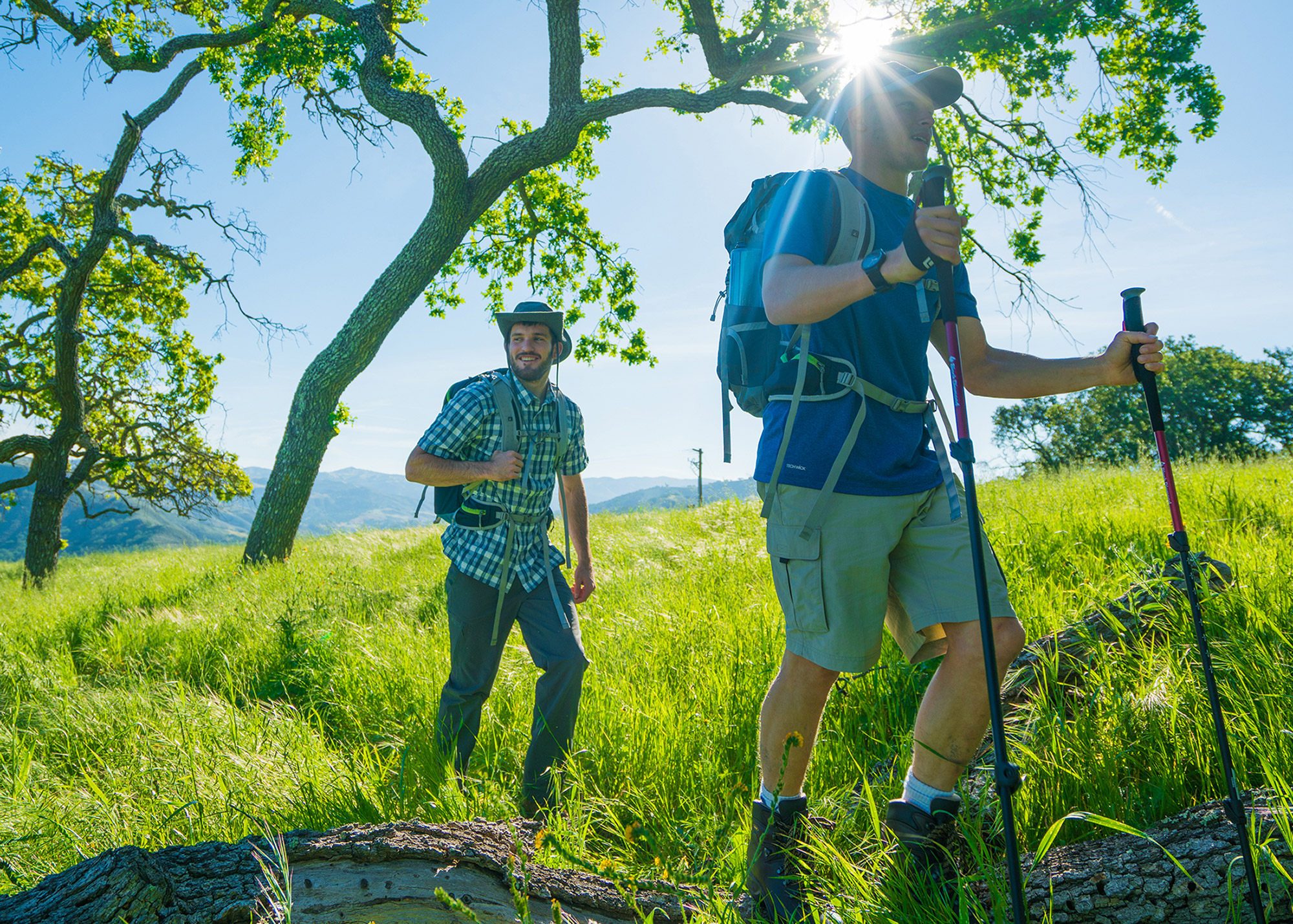In our society, it’s expected that we interact with various types of people on a regular basis. To get along somewhat reasonably, unwritten rules shape and influence many of these social situations. For instance, no law states you must move your grocery cart to the side of the aisle to allow others to pass by in a supermarket. But, we all do that because it’s courteous. Just like in our day-to-day lives, the trails have their own set of unwritten rules. These expectations make being in the woods a more enjoyable experience for everyone.
1. Listening to loud music while hiking
If you enjoy listening to music while you’re hiking, try to monitor how loud it is. When approaching other hikers, turn it down, so that you’re not creating noise pollution. Particularly, please refrain from carrying and blaring portable speakers in the woods. Headphones or earbuds are an alternative, but using them means you will be less aware of your surroundings, including when you approach people.
2. Not giving uphill hikers the right of way
With more and more people heading into the woods, the trails can get very crowded. So, first, keep in mind that you are sharing a narrow trail with other hikers. Particularly, when you’re descending, it’s expected you give anyone ascending the right of way. Some people making their ascent will welcome a rest and let you pass, but as a general rule, the person exerting the most effort gets the trail.
3. Building cairns for no functional reason
Built by trail maintainers to mark the trails, cairns serve a very specific purpose, especially above treeline. For this reason, it’s extremely important that additional cairns aren’t made. Otherwise, other hikers might get confused or even get lost on the trails. As well, building cairns that serve no function goes against Leave No Trace principles.

4. Offering unsolicited advice to other hikers
Everyone has their own opinions about the right and wrong way to do things. At times, those opinions may spill out onto the trail. However, regardless of how much backpacking experience you have, unless someone is doing something blatantly unsafe or wrong, it’s best to keep your opinions to yourself. We all come into the woods with our own experiences and knowledge, so respect everyone’s right to “Hike Their Own Hike.”
5. Postholing, or damaging monorails in the winter by not wearing snowshoes
Winter hiking can be a very exciting and exhilarating experience. Often, places that you’ve visited in the summer look completely different when covered with snow. The trails also develop into “monorails,” as hikers wearing snowshoes pack fresh snow down into a narrow strip. When people don’t use snowshoes on freshly fallen snow, they begin punching holes into the surface. When the trail eventually freezes and hardens, it becomes difficult to travel along and can even be dangerous. To maintain a well-packed trail in winter, people are encouraged to wear snowshoes, especially on unbroken trail.
6. If hiking with a dog, keep it under control around other hikers
It’s fairly common to bring along a four-legged companion on backpacking trips. Some people bring their pets for an added sense of security, for protection, or as a companion. Nevertheless, it’s important to follow the posted rules about leashing dogs on marked trails, and to keep your pet within eyesight and under control when you approach other hikers. This ensures not only the dog’s safety but also protects the trails from damage. As well, you’re being considerate of other hikers, who might not otherwise want unsolicited attention from your four-legged friend.
7. Don’t stop in the middle of a hiking trail to have conversations
Sharing the trail with family and friends or going with a group can be a great way to learn more about the wilderness from others and lets you make memories in the process. When hiking in groups, always be respectful of others you encounter on the trail. For instance, if you and your party are stopping to take a break or have a conversation, be sure to do so off the trail. Doing so allows other hikers to pass by without having to walk around you. That being said, make sure you’re not damaging fragile vegetation when you step off the trail.
8. Let faster hikers pass
Everyone hikes at their own pace. As such, when you head out into the woods, you will encounter various types of hikers. Some prefer to carry less gear and trail run, others carry a moderate amount and go at a steady speed, and those with heavier packs may travel at a slower rate. In all cases, respect everyone’s right to explore at their own pace. In turn, let faster-moving individuals pass by, and if you’re passing someone, do so respectfully.
As more people discover and venture into the great outdoors, it’s imperative to respect each person’s approach and journey. If we agree to treat everyone with the same respect we would want and understand these unwritten rules, the growing number of hikers matters less, and everyone in turn can enjoy the woods.
Rebecca Sperry
Rebecca Sperry is an avid year round hiker who resides in southern New Hampshire. She has completed the NH 48, NE 67, and is currently working on completing the NH 48 for a second time. Rebecca hikes almost exclusively solo and encourages women to step outside their comfort zone, get outside, and enjoy the wilderness. You can follow her adventures @sockedinhikes.
Related Posts
April 2, 2024
10 Tips for Mountain Biking Etiquette During Mud Season
One rough spring could ruin the…




